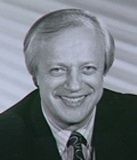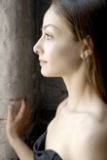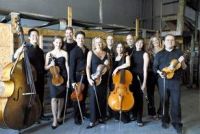February 2, 2008
Polusmiak, Berman-Järvi Share "New Beginnings" at NKU
Mary Ellyn Hutton
 Sergei Polusmiak Sergei Polusmiak Tatiana Berman-Jarvi Tatiana Berman-Jarvi |
What do you get when you put Russian and Ukrainian musicians together onstage? Energy problems? (Analogy to the clash between the two countries over energy policy shamelessly intended.)
Quite the contrary, there was musical energy to spare Friday evening in Northern Kentucky University’s Greaves Concert Hall.
The occasion was NKU’s “New Beginnings,” a chamber music series featuring distinguished artist-in-residence Sergei Polusmiak and guests. Polusmiak, a native of Kharkiv, Ukraine, welcomed Russian born violinist Tatiana Berman-Järvi -- neither was fazed by the Arctic weather outside -- for a program aptly described as a “mixture of French beauty and Russian power.”
“French beauty” referred to three Gallic works, Olivier Messiaen’s 1932 Theme and Variations for Violin and Piano, Sonata for Violin and Piano by Debussy and Sonata in A Major for Violin and Piano by Cesar Franck.
The “Russian power” denoted Rachmaninoff’s muscular Piano Sonata No. 2 in B-flat Minor, Op. 36, as well as power of a subtler sort, Tchaikovsky’s lovely “Meditation,” Op. 42, No. 1, for Violin and Piano.
Polusmiak, “Honored Artist of Ukraine,” who immigrated to the U.S. in 1998, is a cogent example of the great tradition of piano playing exemplified by Vladimir Horowitz and his sister Regina, with whom Polusmiak studied in Ukraine.
Berman-Järvi has been putting audiences on notice since coming to Cincinnati in 2004 (she is married to Cincinnati Symphony music director Paavo Järvi) that she is an exceptional artist who concedes nothing to today’s top-ranking fiddlers. A product of the Yehudi Menuhin School in England and London's Royal College of Music, she displays her violinistic pedigree in everything she does.
She opened with the Messiaen, a work of mystical embodiment in the manner of his well known “Quartet for the End of Time” (performed by Berman-Järvi and members of the chamber group Concert:Nova at Cincinnati’s Christ Church Cathedral in December).
Berman-Järvi possesses a distinctive tone – ineffably sweet, with a rapid, precise vibrato that she applies with exquisite musicianship. Even the most intense moments never veer into excess or self-indulgence, but serve the music. (Three-quarters of a violinist’s tone, is a product of the player, not the instrument -- Berman-Järvi plays on an 1840 violin by British violin maker William E. Hill.)
These gifts, allied to technique in spades, served her and the music well in the Messiaen, where she soared above pealing chords by Polusmiak in the final variation, in the Tchaikovsky “Meditation,” which she capped with a silvery, stratospheric, high D, and, indeed, throughout the concert.
Polusmiak can be a volcanic pianist and he was in the Rachmaninoff Sonata No. 2, a work which lends itself to such playing. In three movements, the last two played without pause, the music is often turbulent, even angry, with volleys of notes pouring from the keyboard. At such moments, Polusmiak seemed to have all 88 keys in his hands, helpless to do anything but his bidding, aided by effective, liberal pedaling.
The second movement was gentle and quasi-rhapsodic, the final movement tumultuous in the extreme, drawing an instant standing ovation from the crowd. Obviously immersed in his playing and the excitement of the moment, Polusmiak waved from the wings rather than returning to center stage to acknowledge the applause (perhaps needing to retreat for de-compression).
The two violin/piano sonatas followed after intermission. Debussy’s Sonata, composed in the shadow of World War II, had a sometimes wistful, fluid elegance, from the Berman-Järvi's soft, opening statement to the playful second movement and the brisk finale.
Franck’s A Major Sonata made a sterling finish to the recital (Franck composed it for Belgian violinist Eugene Ysaye, music director of the CSO from 1918-22). Collaboration by the two artists was superb here, Berman-Järvi applying her bow expertly and judiciously for a big, lustrous sound which she could plateau easily to match Polusmiak’s. Twice they shaped the Sonata’s cyclical opening theme to a blossoming climax.
Beginning with ominous rumblings in the piano, the second movement grew impetuous and wonderfully expressive. The violin/piano dialogue in the third movement was touching, powerful and evenly matched, setting a serious mood that melted charmingly in the finale. Here they took off after one another in high good humor (it is structured imitatively), working up to an exuberant ending and earning another standing ovation.
